Why Triton Digital Exec Sharon Taylor Thinks Podcasting Is Losing Sight of Its Audio Origins
Garrett SearightJuly 23, 2025
Video podcasting is on the upswing, with nearly every major podcast embracing the likes of YouTube, TikTok, Rumble, and the like. But can that go too far and alienate the audio-only fans who built the medium? Triton Digital Executive Vice President of Podcast and Content Delivery Sharon Taylor believes the answer is an emphatic yes.
Podcasting has grown wildly on YouTube, with the company investing heavily in the medium. Additionally, it has created its own podcast charts to rival those released by the likes of Triton Digital and Podtrac — among others — as a way to cement itself in the podcasting medium.
But those chasing after the higher CPMs of YouTube, or looking to capture those huge audiences available on the digital video platform, might be on a wild goose chase that could harm an already existing audio-focused podcast, Sharon Taylor argued.
“If I go back a couple of years — when podcasting and video were just starting to be talked about — everyone was like, ‘Oh, it’s a flash in the pan,’ or, ‘Yeah, there might be some traction.’ But over the last couple of years, we’ve clearly seen there’s a really hungry video audience looking for this content,” Taylor said. “Whether it’s audio audiences switching to video or users who just like YouTube or Spotify video. I think the data still remains to be seen.
“My cautionary tale — which I’m obviously trying not to frame like I’m Henny Penny saying the sky is falling — is this: as the video audience grows and the audio audience remains, my message to the industry is, ‘Hey, don’t forget that you’ve got a ton of people who love audio.'”
Taylor added that there are simple tricks that hosts and podcast creators can implement to not isolate the audio-only faction.
“If you’re on your podcast and talking about things visually without acknowledging that you’re also speaking to an audio audience, it can feel a bit alienating,” she said. “As we shift toward an audience that wants video, I just want to make sure we’re bringing the audio audience along for the ride and not making a hard left turn just to chase the video audience.”
The size of the audience on YouTube is too great to ignore for the podcast genre. Just yesterday, Nielsen’s Media Distributor Gauge showed that 12.8% of all television viewing in the United States takes place on YouTube, expanding its lead over second-place Disney to its largest margin yet.
The Triton Digital executive shared that the shift to video podcasting from the previous audio-only iteration isn’t dissimilar from another real-world example.
“In the same way that people who write books started making audiobooks — because it’s an additional revenue channel — that’s what video is for podcasting,” Taylor analogized. “There’s a new audience that’s already been consuming video and might want to watch a video podcast.”
However, she noted that the revenue generation for video podcasting hasn’t been as easy as perhaps many expected.
“Ironically, monetization is the hardest part,” Taylor shared. “You’re operating in new playgrounds, where platforms like YouTube manage the revenue for you, instead of allowing you to bring your existing advertising model into the video space. I think it shows the power and draw of that audience — because all of us, all publishers — are moving into the video space and trusting that the monetization will eventually work itself out.”
Sharon Taylor noted that performance-driven marketing in the audio space continues to be one that podcasting does better than any other for advertisers. She added that she believes that’s a story that the podcasting industry needs to tell.
Furthermore, she shared that, in a perfect world, content creators would feature both video-specific content in addition to audio-focused programs for the podcasting space.
But the Triton Digital executive knows that that’s easier said than done. Intentionality about remembering that there is still a large, audio-only audience out there is one way to rectify any potential issues of video-based programs.
“I think that now that we’re putting cameras into studios, some of my favorite podcasts that have started doing it are talking about the location, the set, and those kinds of things. As an audio listener, I can come along for that journey, if it’s described well. That’s the power of audio: it’s descriptive, and it paints what you might call mind pictures,” Taylor said.
“But I don’t think it’s intentional. I don’t think they’re saying, ‘Hey, the video audience is all we care about now,’ or that it’s more valuable. I think they’re just excited to have new viewers and a new audience, and they want to make sure they’re including them as well.
“It’s a delicate balance to keep in mind. Once you’ve got a camera there and you’re looking at it — even though you’ve got a mic — your brain starts treating it like a show people are watching. That’s very different from what people originally loved about podcasting, which was that they could do it in their pajamas in a closet.”
